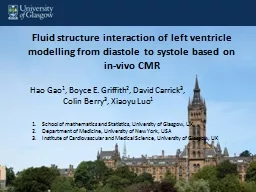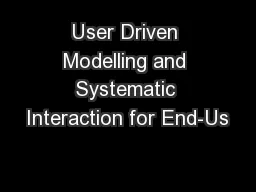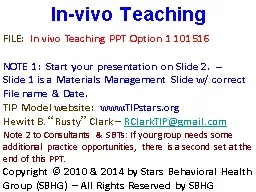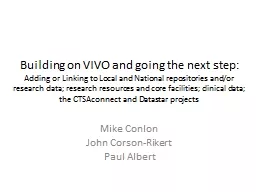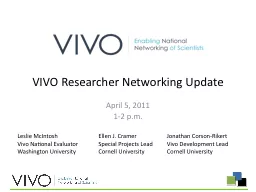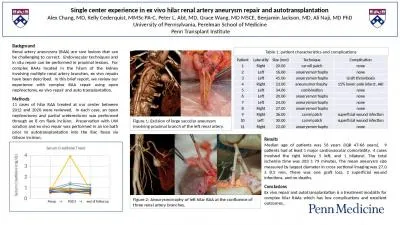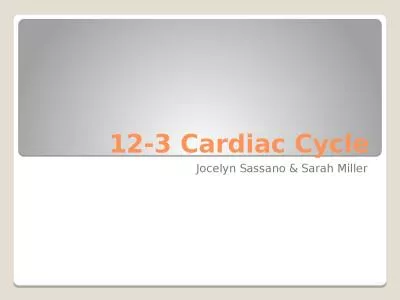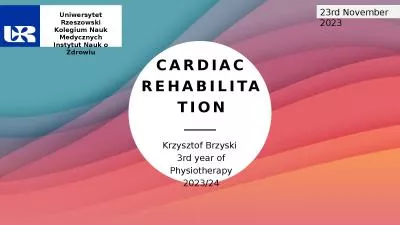PPT-Fluid structure interaction of left ventricle modelling from diastole to systole based
Author : limelighthyundai | Published Date : 2020-08-03
Hao Gao 1 Boyce E Griffith 2 David Carrick 3 Colin Berry 3 Xiaoyu Luo 1 School of mathematics and Statistics University of Glasgow UK Department of Medicine
Presentation Embed Code
Download Presentation
Download Presentation The PPT/PDF document "Fluid structure interaction of left vent..." is the property of its rightful owner. Permission is granted to download and print the materials on this website for personal, non-commercial use only, and to display it on your personal computer provided you do not modify the materials and that you retain all copyright notices contained in the materials. By downloading content from our website, you accept the terms of this agreement.
Fluid structure interaction of left ventricle modelling from diastole to systole based: Transcript
Download Rules Of Document
"Fluid structure interaction of left ventricle modelling from diastole to systole based"The content belongs to its owner. You may download and print it for personal use, without modification, and keep all copyright notices. By downloading, you agree to these terms.
Related Documents

